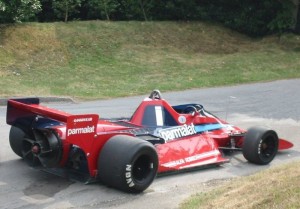 In 1976, a young Gordon Murray was looking for any advantage to to make the struggling Brabham F1 cars more competitive. Murray turned his attention to the brake system. If you are able to make a brake rotor lighter, it will not only improve the braking performance but the acceleration and handling.
In 1976, a young Gordon Murray was looking for any advantage to to make the struggling Brabham F1 cars more competitive. Murray turned his attention to the brake system. If you are able to make a brake rotor lighter, it will not only improve the braking performance but the acceleration and handling.
In 1969, the Concord was the first aircraft to fly with carbon brakes. The carbon rotors were the large and there was no way they could fit on a race car. Murray’s first experiment was to install carbon fiber “pucks” into steel rotors. The technology was not reliable at first, in 1976, Carlos Pace crashed at 180 mph after heat build-up in the brakes boiled the brake fluid, leaving him with no way of stopping the car.
By 1979, Brabham had developed an effective carbon-carbon braking system, combining structural carbon discs with carbon brake pads. The rotors were actually waste from the process used to make aircraft brakes. It was the center that was cut out for large aircraft that went on to become the first Brabham carbon rotors.